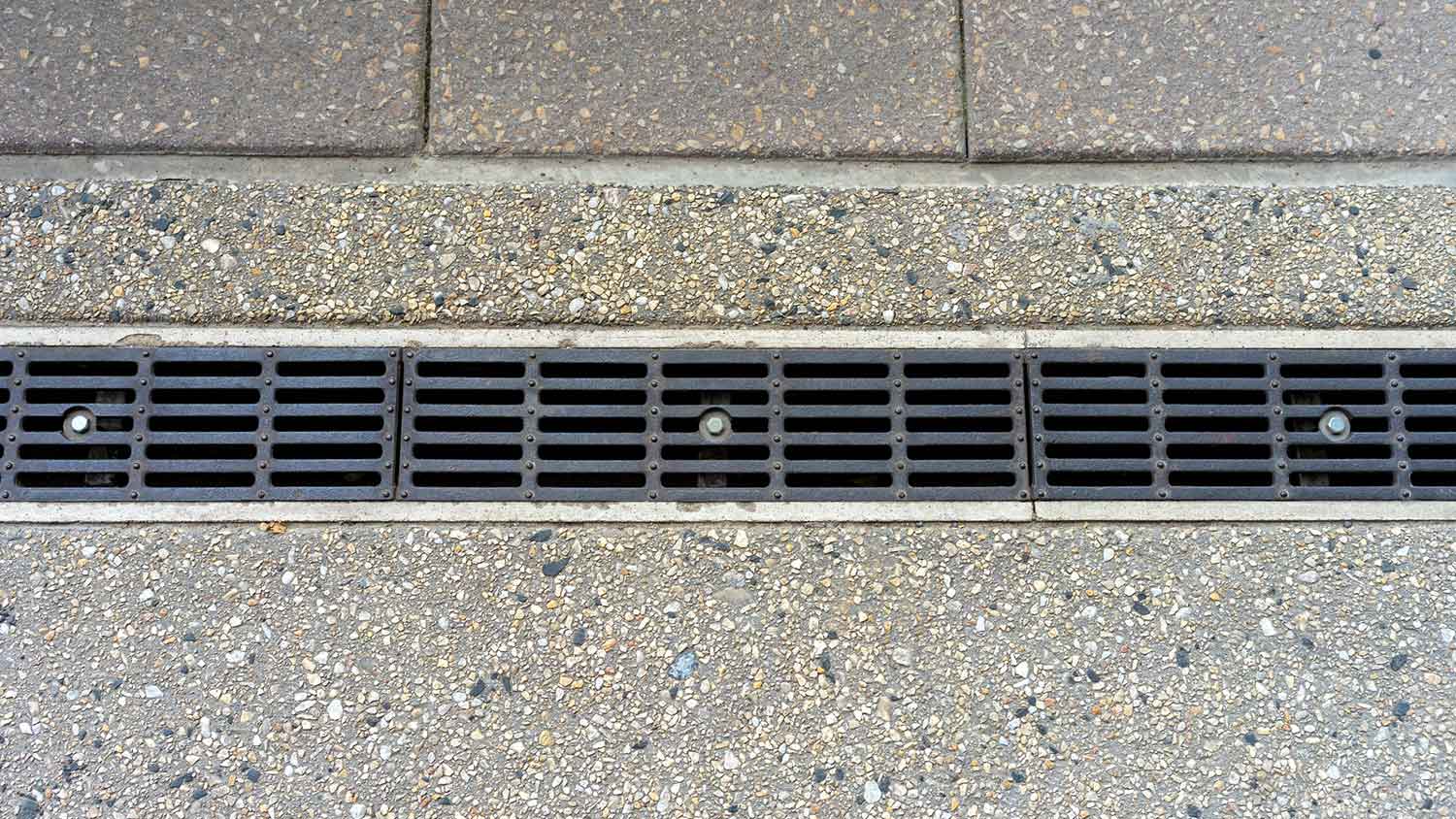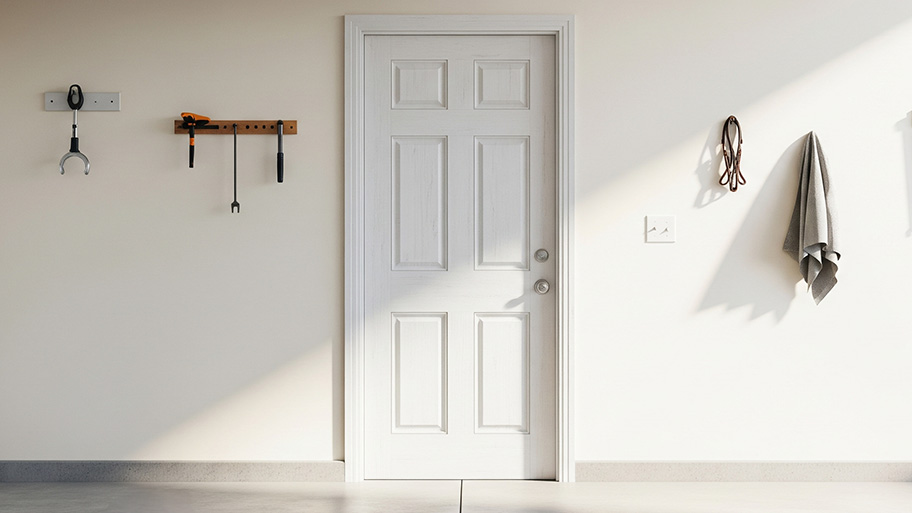
Want to add value and living space to your home? Use this guide to figure out the cost to convert your garage into living space to see if it’s worth it.
Excess water and odors can set up shop elsewhere


A garage floor drain system helps prevent damage to your garage.
Trench and rounded drains are the two most popular grate styles for garage floor drains.
Not all homes require a garage floor drain, but it's a good option for areas with heavy rainfall.
While not glamorous, understanding your garage floor drain diagram can help you maintain a clean, comfortable garage space free of flooding and odors. This comprehensive guide delves into the anatomy of a garage floor drain, breaking down each crucial part and its role within your system.

Understanding the various components of a garage floor drain and its functions is essential to learning how it works. Dive into the anatomy of a garage floor drain and each part's role in maintaining a clean and functional garage space.

Grate covers serve a dual purpose of allowing water to flow through to the drain while preventing the entry of debris. There are two garage floor drains: trench and rounded, which refer to the grate type and drain size.
Trench drain covers are elongated and feature slotted or grated patterns designed to efficiently capture water runoff along a narrow channel. The long, narrow shape covers a larger surface area, enhancing drainage capacity. Trench drains are especially effective in areas that require managing a substantial volume of water. If you're struggling with figuring out how to keep water from coming in under your garage door, a trench could be a great solution.
Rounded drains use a circular design for their grate covers and are usually in residential garages. This type of drain is best for handling smaller volumes of water. The rounded grate covers offer a sleek and compact solution, making them suitable for spaces where aesthetic considerations are important. Despite their smaller size, rounded drains remain efficient in preventing debris from entering the drain system.
Positioned directly beneath the visible grate or cover, the strainer is a removable component with openings designed to catch larger particles like leaves, dirt, and other debris. Its primary function is to act as a filter, allowing only water to pass through while effectively trapping solid materials before they can reach the deeper parts of the drainage system.
Regular cleaning and maintenance of the strainer are essential to its effectiveness, as a clogged strainer can impede water flow and compromise the overall performance of the garage floor drain system.
The drain body is a key element in the garage floor drain system and serves as the central housing that connects the visible drain opening to the underlying plumbing infrastructure. Positioned beneath the grate and strainer, the drain body directs and channels water toward the plumbing system for efficient drainage. It often features a floor flange, securing the drain body to the garage floor for stability.
Located in the drain body, the cleanout plug is a removable barrier that provides access to the drain pipes for maintenance tasks. The cleanout plug is strategically positioned to allow straightforward entry for cleaning, inspection, and clearing potential blockages. Its design ensures a tight seal when in place, preventing water and debris from escaping the drain system.
The P-trap is designed to prevent unpleasant sewer odors from entering the garage while also aiding in trapping debris. This curved pipe, which resembles the shape of the letter P, is situated within the drain body and creates a water seal that acts as a barrier against sewer gases. The P-trap accomplishes this by retaining a small amount of water within its bend, effectively blocking the passage of noxious odors from the sewer or septic system.
As water moves through the drain, a portion is directed into the bend of the P-trap, forming a barrier that effectively seals the area. This barrier ensures that harmful sewer gases cannot rise through the drain and into the garage. The P-trap also functions as a debris catcher, intercepting small particles that might otherwise continue to flow through the drainage system. The function of the P-trap ensures a hygienic, efficient, and odorless garage floor drainage system.
Proper upkeep is crucial for maintaining a garage floor drain system and avoiding water damage and foul smells. Regular cleaning is key, which entails clearing debris, sediment, and dirt from the drain and its components. You should periodically remove the grate and clean the strainer underneath. To access the drain pipes and remove blockages, you should also clean and inspect the cleanout drain by removing the plug.
To prevent unpleasant odors and debris buildup, keeping the P-trap well-maintained is crucial. Check the water seal regularly and add water to ensure sewer gases can't enter the garage. A dry P-trap could cause a foul smell, but replenishing the water seal should solve the issue. Make sure to visually inspect the entire garage floor drain system regularly for signs of damage, corrosion, or leaks in both the drain body and surrounding components. If any issues are detected, it's important to make repairs or replacements promptly to preserve the system's integrity.
Ensuring the garage floor is properly intact is another key aspect you'll want to regularly inspect. Cracks near the grate could disrupt the flow of the drainage system. Repairing may require sealing the garage floor if cracks are present or rebuilding any damaged flooring.
If you have parts of a garage floor drain that require repair, DIYing the job can be cost-effective if you have some plumbing skills. The parts can range in price between $20 and $100. However, if you make any mistakes, you’ll still need to hire a plumber to fix them.
Local building codes and regulations require specific standards for garage floor drain installations. Professionals have the knowledge needed to ensure the installation is compliant.
Because draining systems are often built into the flooring plan of a garage, there's a chance that the required repair involves fixing the flooring, such as a crack near the grate. Or, you may be interested in installing a drain when there isn't one in place. Either way, you'll want to hire a professional garage floor coating expert. Repairing or replacing a garage floor costs between $2 and $14 per square foot.
Choosing whether to go the repair or replacement route with parts of your damaged garage floor drain depends on a few factors. The extent of the damage is crucial to consider when deciding whether to repair or replace a damaged item. Small issues, such as minor cracks or loose connections, can be addressed through repairs. However, if the damage is extensive or there’s significant wear and tear, replacement may be a more viable solution, particularly if multiple components have been compromised.
If the system is fairly new and the damaged component is still within its expected life span, repairing will be a sensible decision. However, if the system is old and shows wear and tear in several areas, replacing it is more cost-effective and even offers the chance to enhance the system's overall performance.
From average costs to expert advice, get all the answers you need to get your job done.

Want to add value and living space to your home? Use this guide to figure out the cost to convert your garage into living space to see if it’s worth it.

Building a shed adds storage space, provides protection for equipment, and can add living space. Shed costs depend on the size, materials, and amenities.

Want to revamp your garage and add some utility? Use this garage remodel cost guide to see what your project will cost before you get started.

Thinking about repurposing your garage? Use these garage conversion ideas to transform your area and get the most use and added home value possible.

Fire-rated doors can help protect your home from a fire in the garage. Before you buy, read this guide to understand fire-rated doors and where to install them.

If you’ve ever wondered, “Who can I get to build a carport?” you’re in the right place. Read on to learn about professional carport builders.